Fairly common questions are: - which side to star the CT?
- which side to have the polarity?
- are there any consequences or implications?
The answer, as always, depends on the application, and then to some extent on the capabilities and settings of the IEDs! Non-directional ProtectionIf the protection elements "50" or "51" elements (IEEE C37-2008 are purely non-directional, they only operate on the magnitude of current so at least in that respect, polarity and star are immaterial. The two independent choices star side and polarity sides is only a question of standardisation in order to be consistent across the various locations simply to ensure there is no confusion for the technicians. Directional Current, Distance and Power- based ApplicationsHowever, if the "50" or "51" elements (IEEE C37-2008) are now directional as "67" devices, or perhaps a distance function "21", reverse/over power function "32", or any other power related function including metering etc, the direction of power flow becomes significant. If the IED allows changing of the polarity seen by the IED as part of its available settings, the direction can be set to suit the application as part of commissioning. As most modern directional-based relays have polarity settings. then as with non-directional relays, the polarity of the CT is arguably just a matter for company convention. If we consider directional overcurrent and earth fault relays connected to CTs in a Holmgren connection, there are eight possible combinations requiring consideration of the protection element forward/reverse setting. This can be shown if we consider an earth fault "downstream" of the CT point and the direction of current flow in the relay earth fault element that will cause operation.
| | P1 towards source |
|---|
CT
Star
source
side | 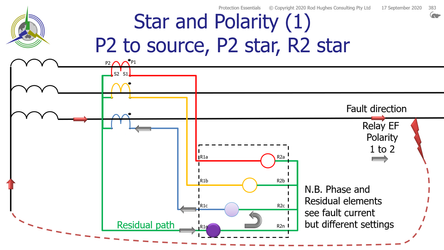
CT P1 is connected to relay R1 Note direction of current through the relay Phase relay: R2c to R1c Earth Fault relay: R1n to R2n | 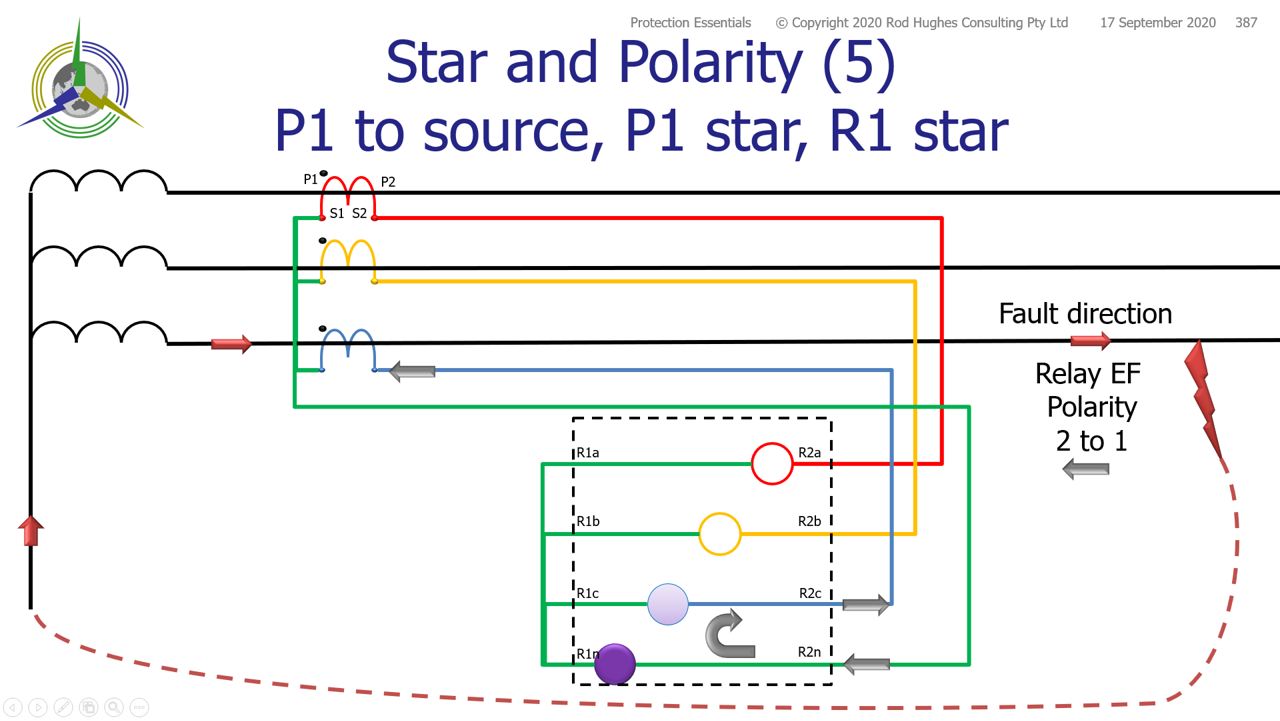
CT P2 is connected to relay R2 Note direction of current through the relay Phase relay: R1c to R2c Earth Fault relay: R2n to R1n This is opposite #1 as both CT polarity sense as well as relay star has swapped |
|---|
CT
Star
source
side | 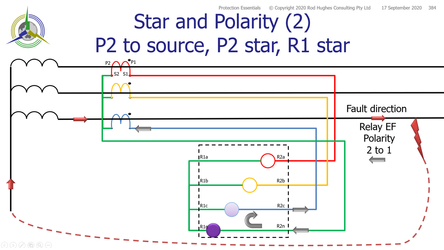
CT P1 is connected to relay R2 Note direction of current through the relay Phase relay: R1c to R2c Earth Fault relay: R2n to R1n This is opposite #1 as only relay star side has changed | 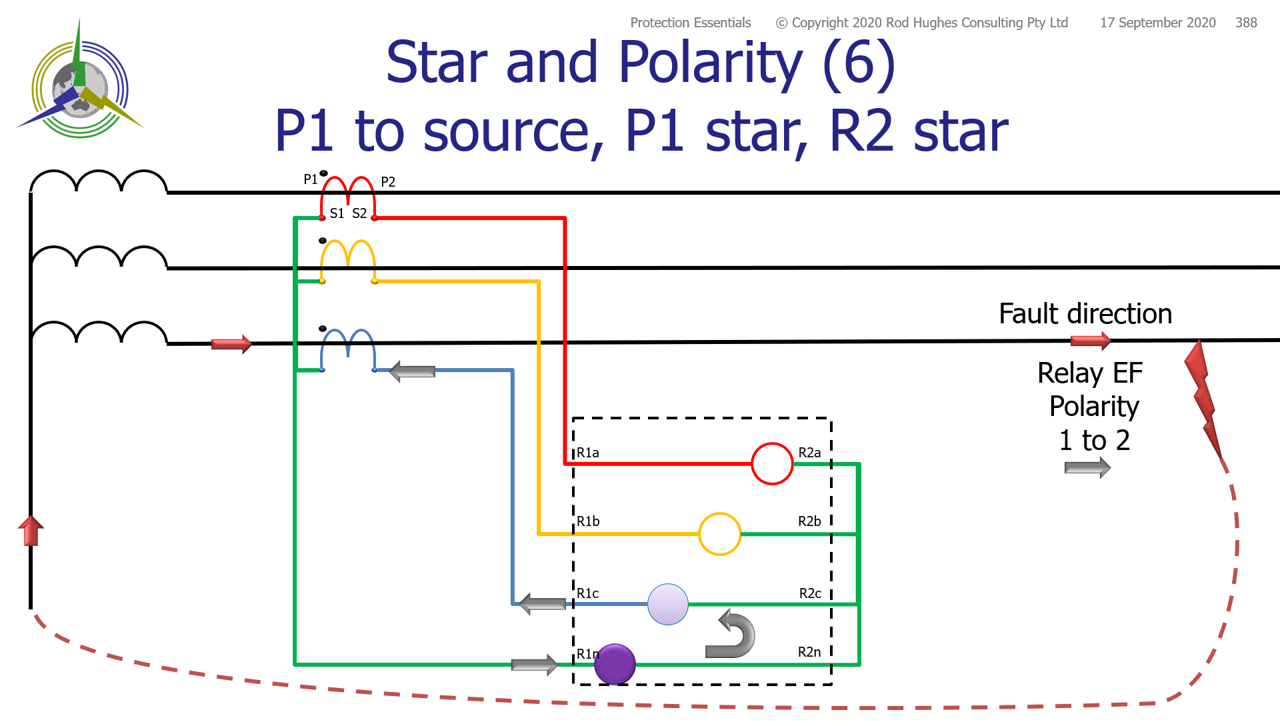
CT P2 is connected to relay R1 Note direction of current through the relay Phase relay: R2c to R1c Earth Fault relay: R1n to R2n This is opposite #5, but the same as #1 as you can see the wiring arrangement is identical |
|---|
CT Star load side | 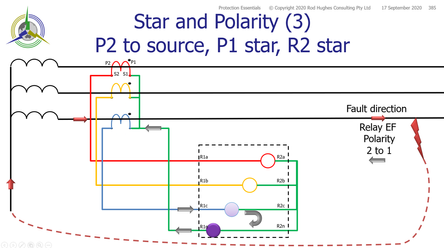
CT P2 is connected to relay R1 Note direction of current through the relay Phase relay: R1c to R2c Earth Fault relay: R2n to R1n This is opposite #1 | 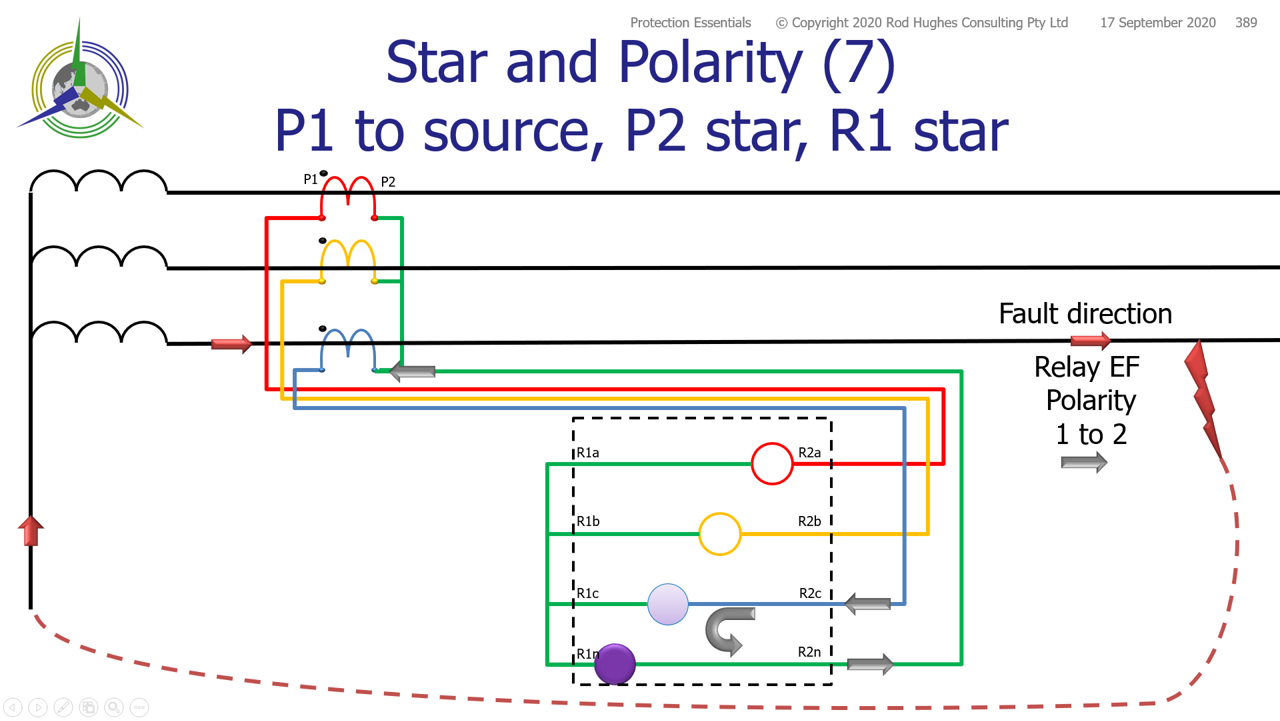
CT P1 is connected to relay R2 Note direction of current through the relay Phase relay: R2c to R1c Earth Fault relay: R1n to R2n This is same as #1 |
|---|
CT Star load side | 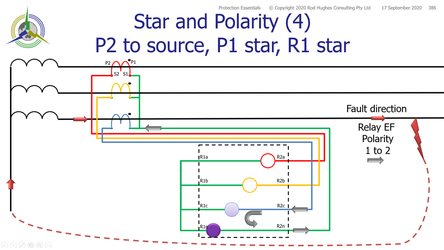
CT P2 is connected to relay R2 Note direction of current through the relay Phase relay: R2c to R1c Earth Fault relay: R1n to R2n This is same as #1 | 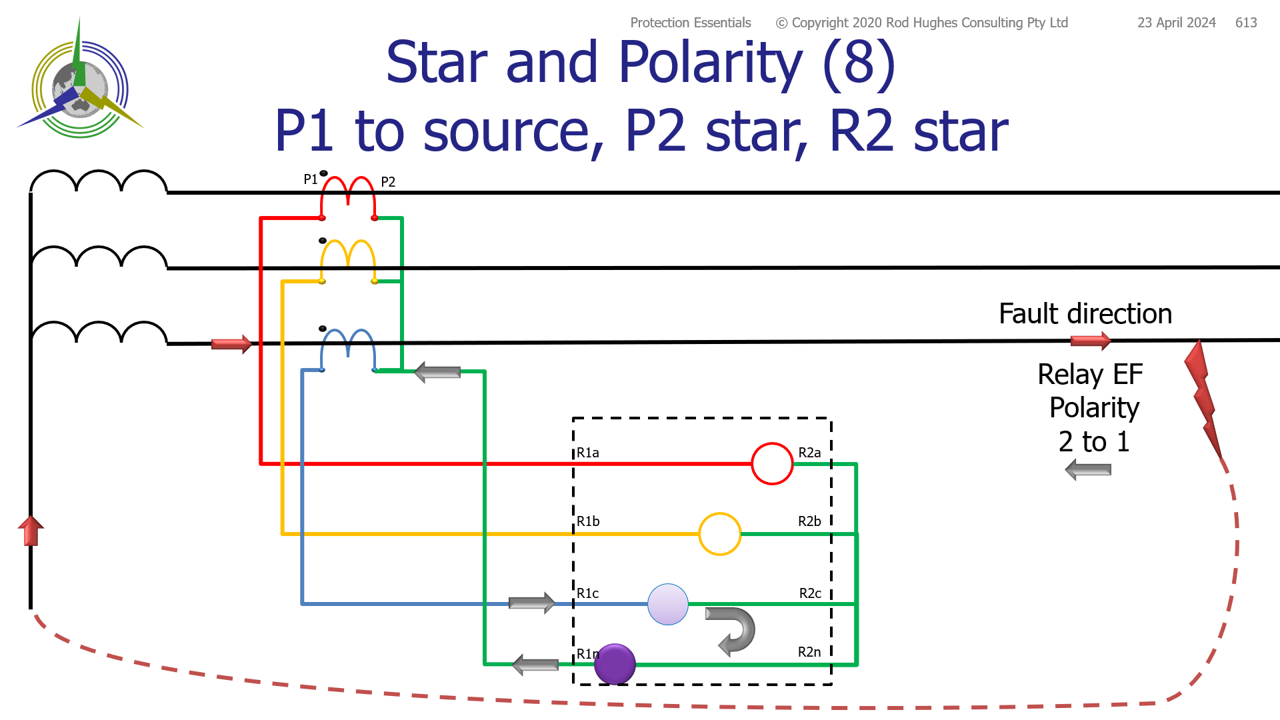
CT P2 is connected to relay R1 Note direction of current through the relay Phase relay: R1c to R2c Earth Fault relay: R2n to R1n This is opposite #1 |
|---|
Clearly star side is irrelevant as #1, #4, #6, and #7 are identical,
whilst #2, #3, #5, #8 are identical but opposite the others. It is critical however to match polarity of CT and relay connections ... noting many relays now allow you to "swap" the polarity sense of the relay by settings.
Differential ApplicationsThis is arguably a little more complicated in the "it depends" consideration - Merz-Price Circulating Current High Impedance Differential
- Low Impedance Differential
|